The APS film
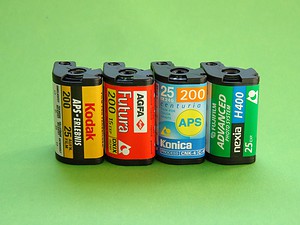 In 1996 Canon, Fujifilm, Kodak and Minolta and Nikon released the Advanced Photo System, better known as APS film. Unlike other films, the APS film is in a closed cassette. The film is removed only for exposure, development und digitization. The film has a status indicator on the bottom part of the cassette, which shows 4 different stages: 1 = unexposed, 2 = partially exposed, 3 = fully exposed, 4 = developed. If you want your APS film digitized at MEDIAFIX, the indicator has to show stage 4. Normally APS films were offered with a capacity of 15, 25 or 40 recordings.
In 1996 Canon, Fujifilm, Kodak and Minolta and Nikon released the Advanced Photo System, better known as APS film. Unlike other films, the APS film is in a closed cassette. The film is removed only for exposure, development und digitization. The film has a status indicator on the bottom part of the cassette, which shows 4 different stages: 1 = unexposed, 2 = partially exposed, 3 = fully exposed, 4 = developed. If you want your APS film digitized at MEDIAFIX, the indicator has to show stage 4. Normally APS films were offered with a capacity of 15, 25 or 40 recordings.
Your favourite pictures don’t seem to have it the easy way: They are carried around, are shown to friends and family. This leads to crinkles, tears and spots, which can ruin your pictures. Fortunately you still have the associated negatives as APS films. They will guarantee that you will never lose the old pictures.
Wrong. APS films also have an expiration date. Incorrect storage in the attic or cellar can let the negatives age faster. Color fadings and mould will occur. Take action now: MEDIAFIX saves your memories and digitizes your olds APS films.
What are APS films?
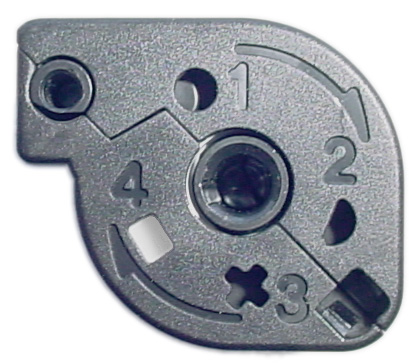
Compared to the common films in the earlier days, the 24mm wide APS films exist with capacities of 15, 25 or 40 recordings and a negative format of 16.7mm x 30.2mm. APS films mostly are negatives.
One big advantage of APS films is that they have optical and magnetic data tracks, that enable data transfer between the camera, film and and the lab. This results in better image quality.
Since we live in a digital world, in which digital cameras and smartphones replaced the analogue photography, the production of APS films was stopped in 2011.
Have APS films developed before digitization
If you still own APS film cassettes, you should have them developed before digitization. This is still possible in drug stores and photography shops. We will afterwards convert your analogue pictures to digital. Of course we will invert your negatives.
We also digitize these formats for you
| Format |
Characteristics |
Price per picture |
35mm
(24x36mm) |
· the most common slide format
· it is called 35mm because of its width |
from €0.11 |
Medium-format
(4×4 to 6x9cm) |
· higher resolution and image quality than 35mm
· popular for professional photographers |
from €0.84 |
Large-format
(9×12 to 30x40cm) |
· best possible image quality
· professional standard, especially in architectural photography |
from €2.49 |
Half-format
(24×24 or 18x24cm) |
· the same film as 35mm
· exposed in the classic silent film format 18x24mm
· extended by Agfa to 24x24mm |
from €0.33 |
| Minox and Pocket (8×11 or 13x17mm) |
· exotic formats
· in most cases low image quality |
from €0.45 |
Instamatic
(28x28mm) |
· easier insert into the camera
· very popular due to its square format |
from €0.45 |
| Panoramaformat (24x60mm) |
· increased viewing angle
· significantly more image content
· particularly popular in landscape photography |
from €0.84 |
 Old analogue media won't last forever. Convert your APS films to digital now and view your unique memories with family and friends on TV, your computer and tablet.
Old analogue media won't last forever. Convert your APS films to digital now and view your unique memories with family and friends on TV, your computer and tablet.

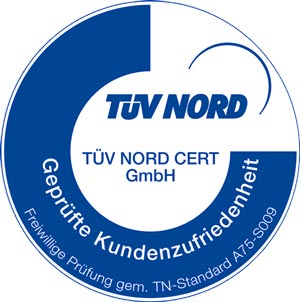
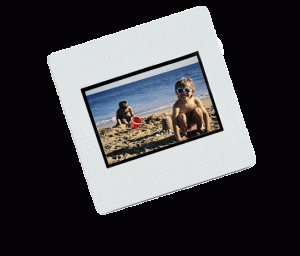
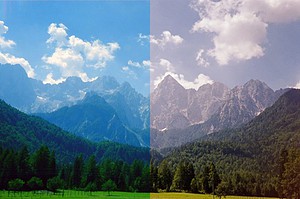
 It pays off to scan at MEDIAFIX: If you have your APS scanned at MEDIAFIX, you will benefit from the lowest price – this is what we will promise with our best-price-guarantee. We scan APS films starting at €0.25. Of course you will get your precious memories back in an excellent image quality.
It pays off to scan at MEDIAFIX: If you have your APS scanned at MEDIAFIX, you will benefit from the lowest price – this is what we will promise with our best-price-guarantee. We scan APS films starting at €0.25. Of course you will get your precious memories back in an excellent image quality. In 1996 Canon, Fujifilm, Kodak and Minolta and Nikon released the Advanced Photo System, better known as APS film. Unlike other films, the APS film is in a closed cassette. The film is removed only for exposure, development und digitization. The film has a status indicator on the bottom part of the cassette, which shows 4 different stages: 1 = unexposed, 2 = partially exposed, 3 = fully exposed, 4 = developed. If you want your APS film digitized at MEDIAFIX, the indicator has to show stage 4. Normally APS films were offered with a capacity of 15, 25 or 40 recordings.
In 1996 Canon, Fujifilm, Kodak and Minolta and Nikon released the Advanced Photo System, better known as APS film. Unlike other films, the APS film is in a closed cassette. The film is removed only for exposure, development und digitization. The film has a status indicator on the bottom part of the cassette, which shows 4 different stages: 1 = unexposed, 2 = partially exposed, 3 = fully exposed, 4 = developed. If you want your APS film digitized at MEDIAFIX, the indicator has to show stage 4. Normally APS films were offered with a capacity of 15, 25 or 40 recordings.